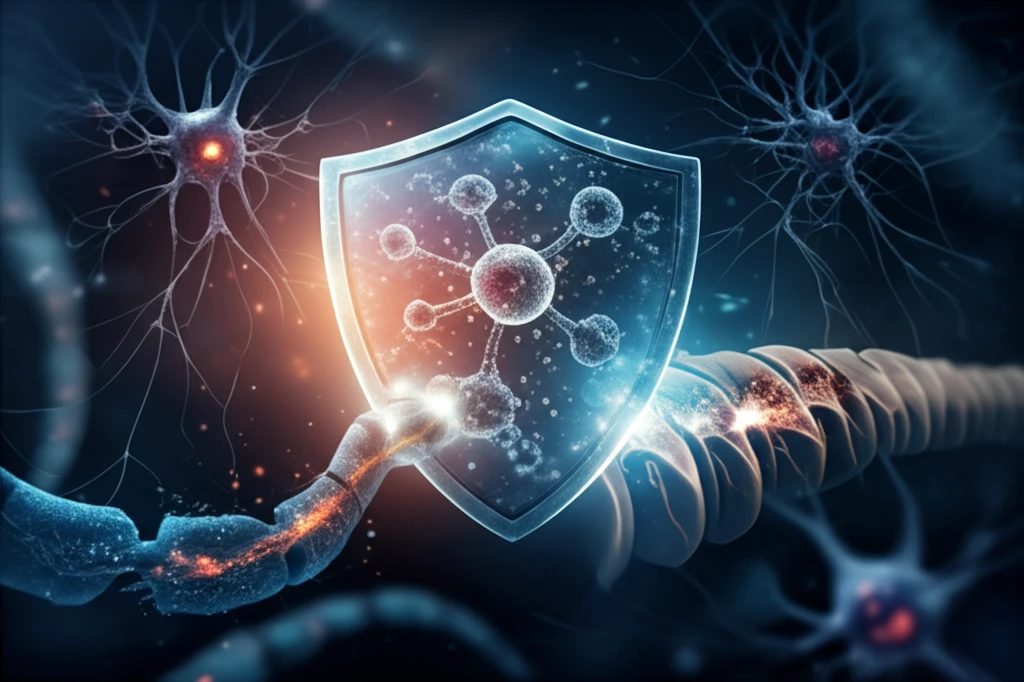
Can Leptin, the 'Obesity Hormone,' Help Repair Spinal Cord Injuries?
"New research suggests a protective role for leptin in neurons after spinal cord injury, offering hope for improved recovery."
Spinal cord injuries (SCI) represent a devastating challenge, often leading to long-term disability with limited effective treatment options. Following a SCI, the cellular environment undergoes drastic changes, including the release of adenosine triphosphate (ATP) into the extracellular space. While ATP serves essential functions, its excessive presence after SCI can trigger a cascade of events leading to an influx of calcium ions (Ca2+) into neurons. This calcium overload, in turn, induces neuronal excitotoxicity and apoptosis—essentially, nerve cell death—exacerbating the initial injury.
Enter leptin, a hormone primarily produced by fat cells, well-known for its role in regulating appetite and energy expenditure. Leptin's functions extend far beyond metabolism, influencing various processes within the central nervous system. Intriguingly, recent investigations have hinted at leptin's potential to aid in recovery after SCI. Studies suggest that administering leptin can improve sensory and motor functions, prompting researchers to delve deeper into the underlying mechanisms behind these beneficial effects.
Now, a new study sheds light on a possible neuroprotective mechanism of leptin, focusing on its influence on caveolin-1 expression within neurons. The findings suggest that leptin's ability to upregulate caveolin-1 could play a crucial role in mitigating the damaging effects of ATP and calcium overload after SCI, opening new avenues for potential therapeutic interventions.
Leptin's Surprising Role: Protecting Neurons After Spinal Cord Injury

Researchers investigated the protective effects of leptin on neurons following spinal cord injury, focusing on the role of caveolin-1, a protein involved in cell signaling and membrane structure. The study, published in Cell Calcium, explored how leptin administration could improve motor recovery after SCI and aimed to uncover the mechanisms behind this neuroprotective effect.
- Suppresses neuronal apoptosis and reduces calcium imaging signals induced by ATP.
- Elevates the expression of caveolin-1 in neurons.
- Promotes locomotor functional recovery after SCI in a mouse model.
Hope for the Future: Leptin as a Potential SCI Therapy
This research offers a promising step forward in understanding how leptin might be harnessed to improve recovery after spinal cord injuries. By demonstrating leptin's ability to protect neurons from the damaging effects of ATP and calcium overload, and by identifying the role of caveolin-1 in this process, the study opens new avenues for therapeutic development. While further research is needed to fully understand the implications of these findings and to translate them into clinical applications, the potential of leptin as a neuroprotective agent for SCI is certainly worth exploring.
